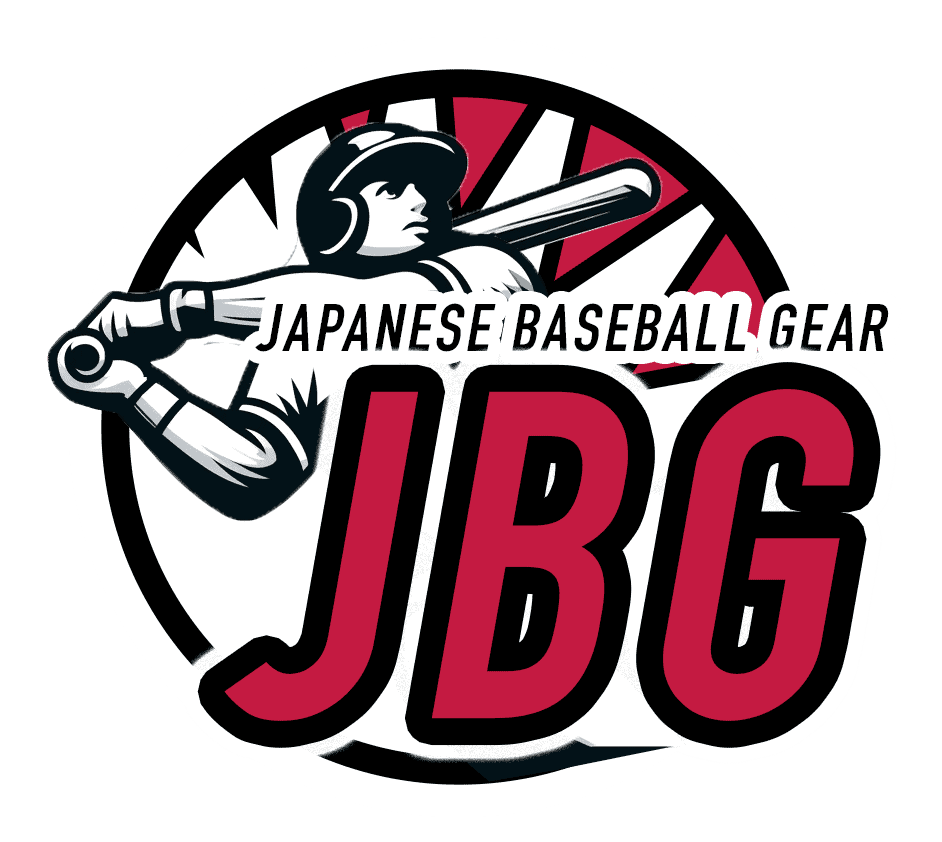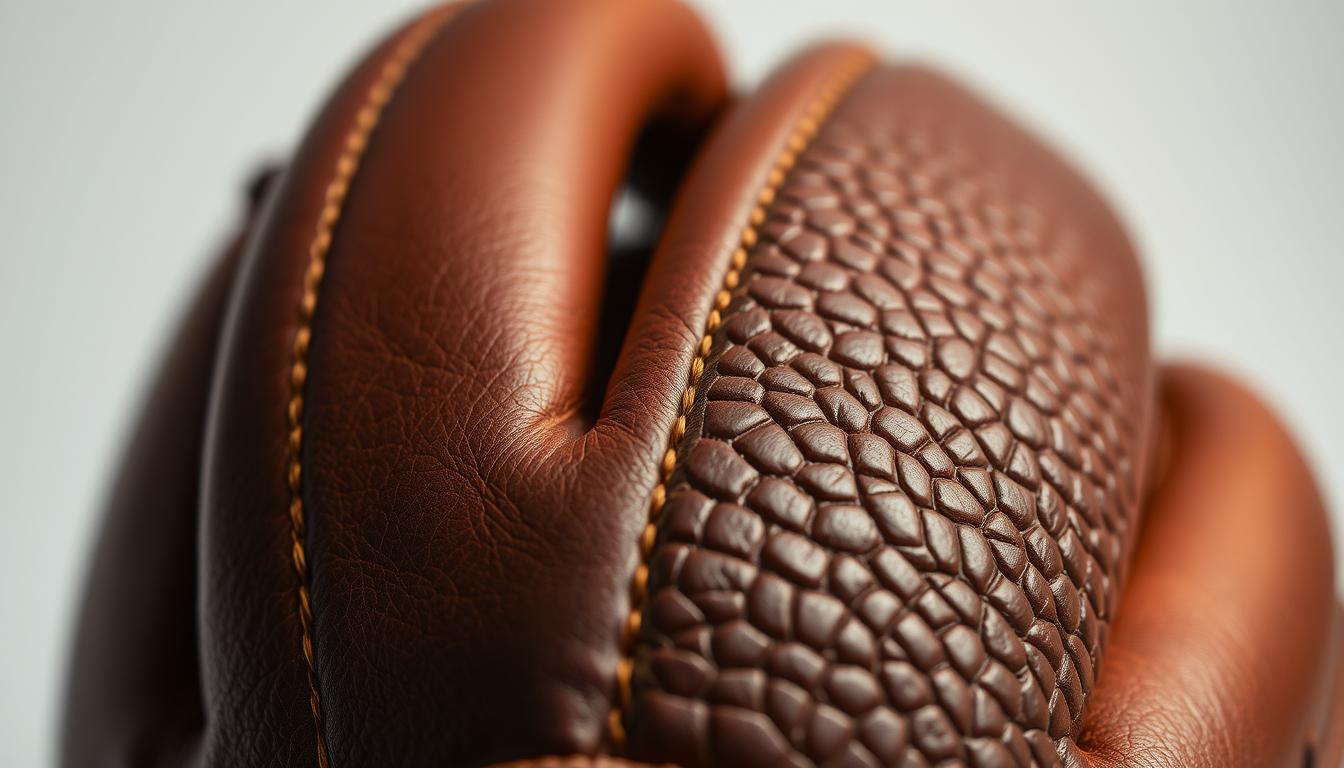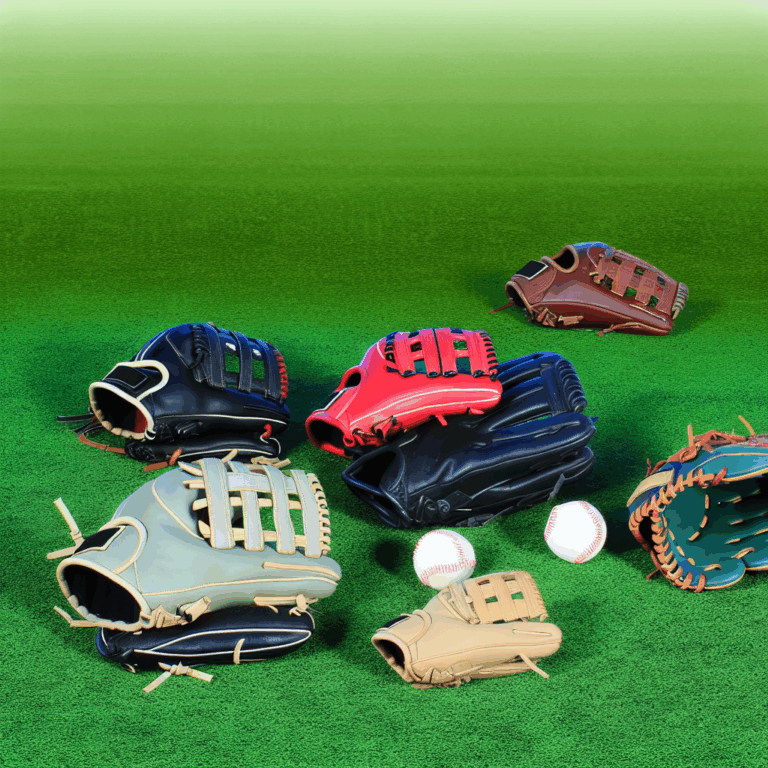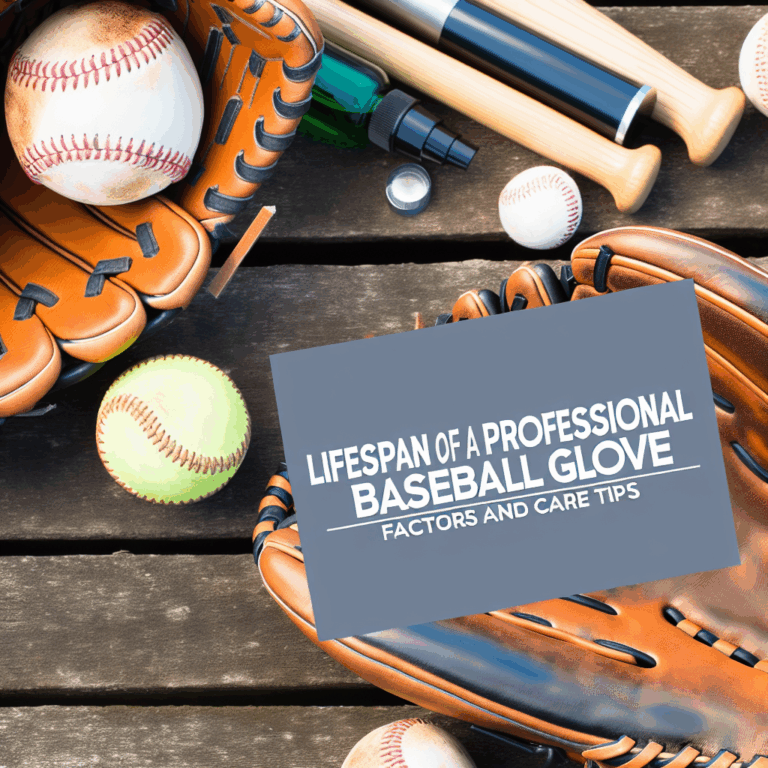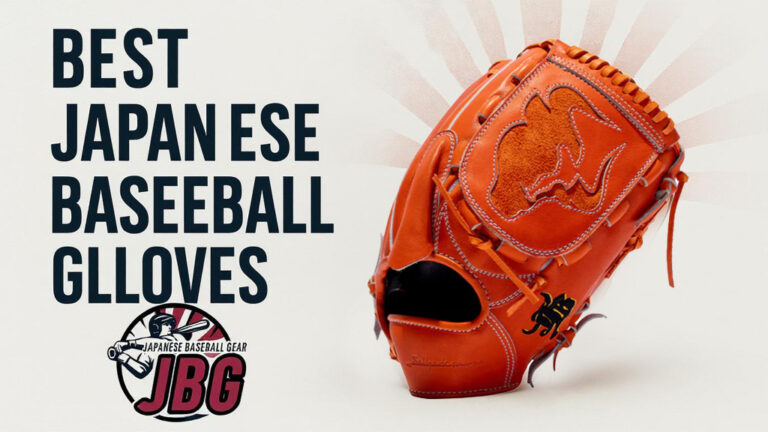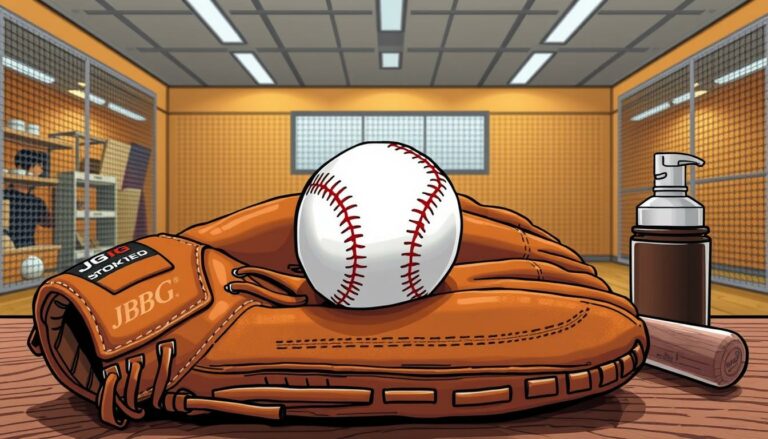Japanese Kip Leather vs. US Steerhide: Which is Better for Baseball Gloves?
In the world of baseball glove leather, most gloves are made from USA Steerhide Leather and USA Cowhide Leather1. This shows how important it is to pick the right leather for top performance. We’re looking at Japanese Kip Leather and US Steerhide to see which is better.
Japanese Kip Leather and US Steerhide are two top choices for baseball gloves. Japanese Kip Leather is light and durable, loved by pros1. US Steerhide Leather, on the other hand, is the heaviest and takes the longest to break in1.
TL;DR
- Japanese Kip Leather is a top pick for pros because it’s light and durable1.
- US Steerhide Leather is the heaviest and takes the longest to break in1.
- The leather type of a baseball glove greatly affects a player’s performance.
- Kip Leather is favored by pros for its quick break-in and light feel2.
- The prices of gloves made from different leathers, like Japanese Kip and US Steerhide, vary a lot2.
- Full-grain leather, like Japanese Kip, needs more time to break in than others2.
Japanese Kip Leather: Origins and Characteristics
Japanese Kip Leather is famous for its top-notch quality and performance. It’s a favorite for baseball gloves. This leather is made from young cow hides, known for its strength and durability3. It also has a unique grain pattern.
This leather is loved for its snug fit and excellent grip. It helps players perform at their best.
Japanese Kip Leather is special because it molds to the player’s hand. This means it gets a customized fit over time. It’s also very durable and can withstand a lot of wear and tear4. This makes it perfect for professional baseball players.
High-quality leather in baseball gloves adds a personal touch. It’s tailored to fit the player’s preference and hand shape. This is something professional players really value.
Japanese Kip Leather is stiff and needs a long break-in period5. But it’s worth it because it’s so durable and performs well over time. Premium Japanese-tanned USA Kip leather is the stiffest. It needs a lot of time to break in but is incredibly durable and performs exceptionally well.
US Steerhide: Traditional American Craftsmanship
US Steerhide is a top-notch leather, famous for its toughness and long life. It comes from the hide of older cows6. We love how American skills are used to make baseball gloves from this amazing material. The quality of US Steerhide depends on where it comes from and how it’s made. Many makers, like Nokona, get their leather from American ranchers6.
US Steerhide is known for its unique “crunch” look and feel, loved by many baseball players6. The way it’s tanned is key, with chrome tanning being best for gloves6. Compared to others, US Steerhide has been a favorite for making baseball gloves. Almost all gloves were made from tanned cowhide7.
Here are some key benefits of US Steerhide:
- High-quality leather type known for its strength and durability
- Classic “crunch” look and feel
- Preferred by many baseball players
US Steerhide is a premium choice for baseball gloves. It offers strength, durability, and traditional American craftsmanship6. As we look into baseball gloves, US Steerhide stands out as a favorite among players and makers7.
| Type of Leather | Strength | Durability |
|---|---|---|
| US Steerhide | High | High |
| Full Grain Leather | Very High | Very High |
Breaking In Process Comparison
The breaking in process is key for baseball glove owners. Japanese Kip Leather is easier to break in than US Steerhide8. It’s lighter and breaks in faster, perfect for college and pro players8.
US Steerhide, on the other hand, is durable but takes longer to break in9. This can slow down players who want to start playing fast. But, with patience and the right methods, it offers great performance and durability. Here are the main differences:
- Japanese Kip Leather: lighter, medium break-in time, high quality, long-lasting8
- US Steerhide: heavier, longer break-in time, durable, best for high school and college players9
Steel Sports says Kip Leather is easier to break in than US Steerhide8. Kip Leather is a favorite among pro infield players. It breaks in much faster than steerhide9. Think about these points when picking between Japanese Kip Leather and US Steerhide for your glove.
Knowing how each leather breaks in helps you choose wisely. Whether you pick Japanese Kip Leather or US Steerhide, proper care is key to making your glove last8.
Durability and Maintenance Requirements
Choosing the right baseball glove means looking at durability and maintenance. Japanese Kip Leather and US Steerhide are top picks, each with its own strengths. Japanese Kip Leather stands out for its durability and weather resistance10. US Steerhide, on the other hand, is tough and lasts longer with the right care10.
Keeping your glove in top shape is key. This includes cleaning, conditioning, and storing it right. Oiling your glove helps it break in easier and stay durability and flexible10. Also, using tools like The Glove Wrap or Glove Guardian can make your glove last longer10.
Weather Resistance
Extreme weather can harm leather, with some studies showing up to 30% loss in performance if gloves are not stored well10. Cleaning your gloves before storing them can reduce deterioration by up to 50% compared to unclean gloves10.
Long-term Care Guidelines
High-end baseball gloves often use full-grain leather, the strongest and most durable type11. Top-grain leather is a good choice for amateur players because it’s durable but less expensive11. Japanese Kip Leather is known for being strong, durable, and soft, making it popular in high-end gloves11.
| Leather Type | Durability | Maintenance |
|---|---|---|
| Japanese Kip Leather | High | Regular conditioning and storage |
| US Steerhide | High | Regular cleaning and oiling |
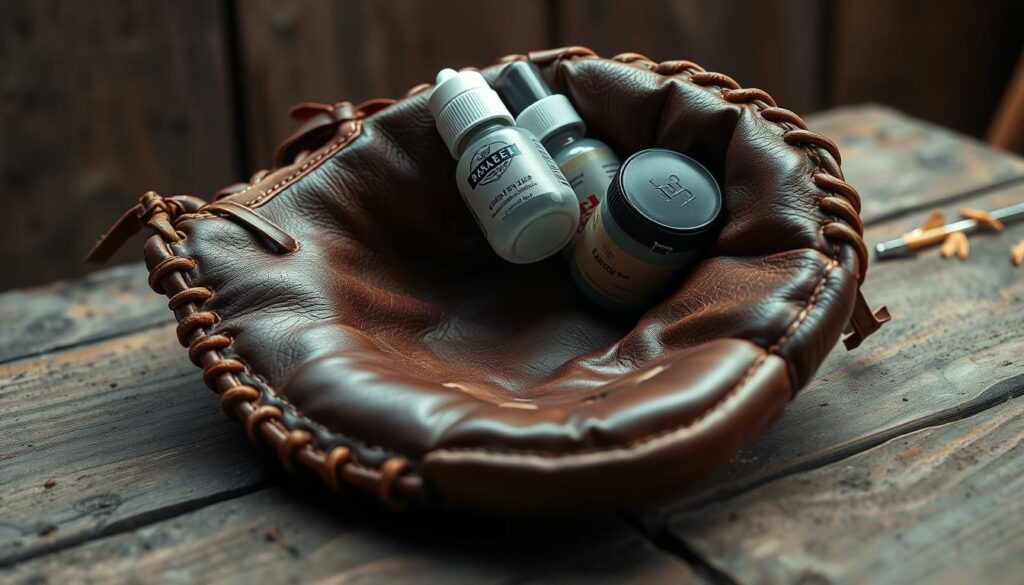
Price Point Analysis and Value Proposition
Choosing between Japanese Kip Leather and US Steerhide for baseball gloves involves considering the price. Steelo Sports notes that Japanese Kip Leather gloves cost more than US Steerhide ones12. This is because Japanese Kip Leather is known for its quality and durability, making it a good investment for serious athletes.
The value of Japanese Kip Leather comes from its craftsmanship and detail. Each glove is handmade for a perfect fit and performance13. On the other hand, US Steerhide gloves are mass-produced, leading to a lower price but a less personalized fit.
Here is a comparison of the price points of Japanese Kip Leather and US Steerhide gloves:
| Material | Price Point |
|---|---|
| Japanese Kip Leather | $200-$500 |
| US Steerhide | $100-$300 |
The choice between Japanese Kip Leather and US Steerhide depends on your budget and what you value most. If you want a high-quality, durable glove with a personalized fit, Japanese Kip Leather might be the better choice, even with its higher price13.
Professional Player Preferences and Testimonials
Choosing the right baseball glove is key for professional players. Many professional players love gloves made from Japanese Kip Leather for their top-notch quality and performance14. Top MLB stars like Bryce Harper, Jose Altuve, and Mike Trout pick gloves from brands like Rawlings and Wilson. These brands offer excellent US Steerhide and Japanese Kip Leather gloves14.
Some players look for gloves with special materials and tech. For example, the Rawlings Pro Preferred series is made from premium kip leather, known for lasting long15. Mookie Betts, on the other hand, likes gloves with features like the A2K SuperSkin, which is super strong14. It’s clear that pros want the best quality and performance from their gloves.
- Bryce Harper: Rawlings Heart of the Hide leather14
- Jose Altuve: Pro Stock leather14
- Mike Trout: Full-grain kip leather14
These players show how important quality materials and craftsmanship are in baseball gloves.
Manufacturing Quality Control and Standards
The manufacturing process is key in making baseball gloves. Quality control is vital to ensure top-notch Japanese Kip Leather and US Steerhide gloves. Japanese makers are famous for their strict quality control and high manufacturing standards, leading to premium products16. They follow a detailed process, including die-cutting and hand assembly, to craft a high-quality glove16.
American makers also follow strict quality control but have different manufacturing standards than Japanese ones. Top brands like Rawling and Mizuno use various leathers, like Cowhide, Kip, Steerhide, and Full Grain. Each leather has its own performance traits17. The choice between Japanese Kip Leather or US Steerhide greatly affects the glove’s quality and performance.
Here are some key factors that affect the quality of baseball gloves:
- Leather selection and cutting
- Outer shell sewing
- Padding attachment
- Web sewing
- Final stitching and lacing
These steps are essential to ensure the glove meets the requiredmanufacturing standards. They guarantee the glove’s quality and performance17. Also, the break-in time and durability of the glove, like those made fromJapanese Kip LeatherorUS Steerhide, depend on the leather type and manufacturing process18.
Understanding Baseball Glove Leather Types
The type of leather in a baseball glove greatly impacts its performance and the player’s experience. Japanese Kip Leather and US Steerhide are two main types, each with its own benefits.
Leather plays a big role in how well a glove performs. Full-grain leather is the strongest and most durable, favored by pros19. Top-grain leather is also strong but less durable, better for amateur players19.
The Role of Leather in Glove Performance
The leather in a glove affects its performance. US Steerhide is strong and durable, a top pick for players20. Japanese Kip Leather is light and firm, loved by pros20.
Choosing the right leather depends on the player’s needs and style. Knowing the different leathers helps players pick the best glove for them. The right leather can greatly improve your game, whether you’re a pro or just starting out1920.
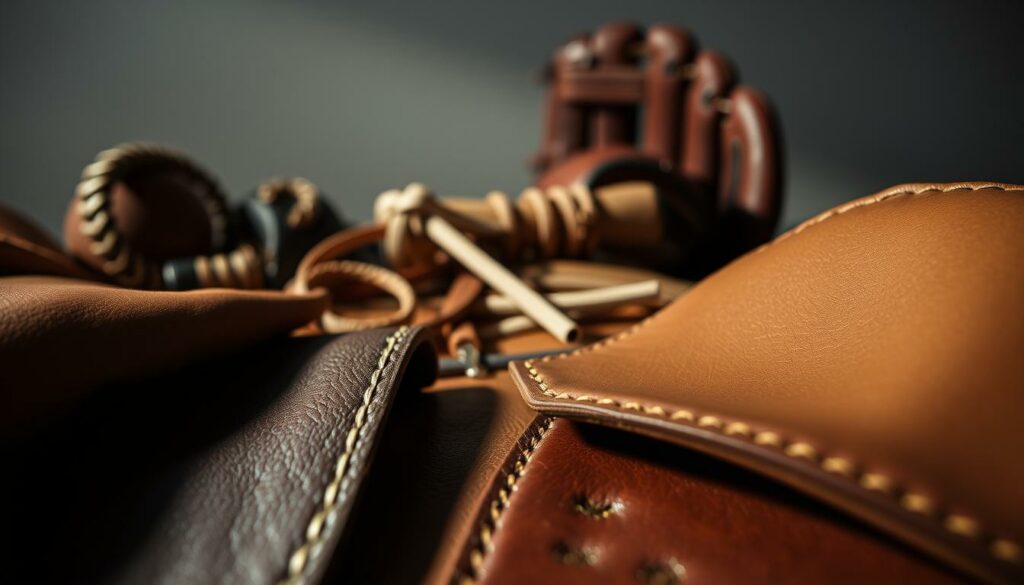
Environmental Impact and Sustainability
When picking baseball gloves, we should think about how they affect the environment. The making of Japanese Kip Leather and US Steerhide harms the planet21. More people want to buy products that are good for the Earth, like eco-friendly gloves21.
Companies like Wells Lamont are now using recycled materials in some gloves. This helps keep trash out of landfills and oceans21. Mizuno is also working to be greener. They fixed over 4,500 items in Japan from April 2022 to March 2023, cutting down on waste22.
Leather gloves, like those made from Japanese Kip or US Steerhide, can’t be recycled. But, old leather can be turned into new products21. More gloves are now made with recycled materials like rPET, helping the planet21.
In short, athletes need to think about the environment when choosing gear. We should pick gloves made from recycled stuff or support companies that care about the planet22. This way, we can help make the future greener.
Conclusion: Making the Right Choice for Your Game
Choosing between23 Japanese Kip Leather and24 US Steerhide for your baseball glove is a big decision. Each material has its own benefits. Japanese Kip Leather is known for its top-notch craftsmanship. American Steerhide, on the other hand, has a long history of excellence24.
When picking the perfect glove, think about durability, upkeep, and your playing role. The right fit and customization can boost your game and comfort2324.
Knowing what each premium leather offers helps you choose wisely. Whether you prefer Japanese Kip Leather’s finesse or American Steerhide’s tradition, a quality glove will improve your game. It will make your time on the field better and help you shine2324.
FAQ
What are the key differences between Japanese Kip Leather and US Steerhide for baseball gloves?
How do the breaking in processes differ between Japanese Kip Leather and US Steerhide?
How do Japanese Kip Leather and US Steerhide perform in terms of durability and maintenance?
What are the price points and value propositions of Japanese Kip Leather and US Steerhide baseball gloves?
What are the preferences and testimonials of professional baseball players regarding Japanese Kip Leather and US Steerhide gloves?
How do the manufacturing quality control and standards differ between Japanese and American producers of baseball gloves?
What is the role of leather in baseball glove performance, and how do Japanese Kip Leather and US Steerhide impact player performance?
What are the environmental impacts and sustainability considerations of Japanese Kip Leather and US Steerhide production?
Source Links
- Choosing Your Baseball Glove Leather
- Best Leather for Baseball Gloves: Our Buyer’s Guide
- Mizuno Baseball Gloves – glove models, pricing, and more!
- How to Choose the Right Baseball Gloves for Different Positions | TalkNats.com
- Marucci Baseball Glove Lineup: Find Your Perfect Match
- Leather guide – Nokona Ballgloves
- The Mystery of Baseball Glove Leather
- Choosing Your Baseball Glove Leather
- Glove Love Part II: Your Glove, Your Leather
- Your Guide to Baseball Glove Care
- Baseball Glove Leather Types
- HOW TO SELECT THE RIGHT BASEBALL/SOFTBALL GLOVE
- Baseball Gloves Market By Size, Growth, Trends and Forecast 2028
- What Gloves Do Pros Use?
- Pro Baseball Player Gear Guide | ThumbPRO
- How baseball glove is made
- The Ultimate Guide On Baseball Glove Manufacturers
- Baseball Glove Leather Types | Academy
- Baseball Glove Leather Types
- Choosing Your Baseball Glove Leather
- A Buyer’s Guide to Sustainable & Eco-Friendly Gloves | Wells Lamont
- Mitigation of Environmental Impact in Products|Mizuno Corporation
- Choosing the Perfect Baseball Glove: A Comprehensive Guide for Players
- Choosing The Right Baseball Glove
